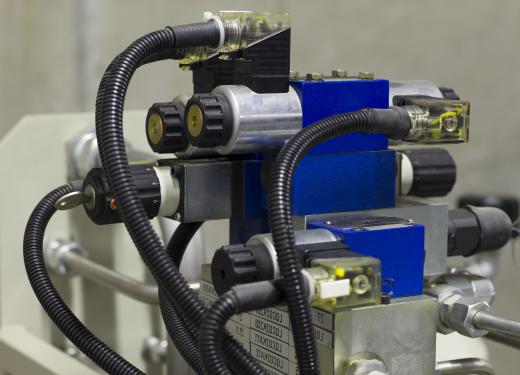A 24V solenoid is an electromagnetic switching or actuation mechanism designed to operate with a 24-volt power supply. The power supply may be an alternating current (AC) or direct current (DC) voltage supply, although 24-volt DC solenoids are generally more common than AC types. Solenoids designed for AC supplies have an extra, shorted winding of coil wire known as a shading coil to prevent “chattering” and can successfully be used with a DC supply. Direct current solenoids may, however, not be used with an AC power supply, as they have no shading coil, which causes AC chatter and potential poor performance and overheating damage. When choosing a new or replacement solenoid for a 24V solenoid, care should be taken to check that the new unit has a coil rated for the correct voltage and type of supply.
A solenoid is an electromagnetic device used to remotely or automatically supply switching, actuation, or adjustment movement to a secondary device. They are widely used and commonly encountered in applications where operator intervention is not possible or safe. Solenoids are extremely simple and generally consist of one static part, namely the coil, and a moving, spring-loaded metal plunger. When the coil is energized with an electric current, it forms a powerful magnetic field around itself. This field attracts the plunger, pulling it towards the coil, supplying the actuation movement in the process.

The 24V solenoid is a common type of solenoid designed to be used with a 24-volt AC or DC coil voltage. The type of voltage is an important, consideration as the two types are not always interchangeable. Solenoids designed for AC supplies may be used in DC applications, but not the other way around, as DC solenoids chatter when used with AC power and may not function properly or be damaged as a result. Although not a hard and fast rule, the 24V solenoid is more often than not designed for DC power supplies.
When a damaged solenoid requires replacement, it is wise to make sure that the replacement is rated not only for the correct voltage, but the correct type of supply. When choosing a solenoid for a new project, the fact that the 24V solenoid is available in both AC and DC types can make things a little easier for the designer as rectification of a mains supply would not be necessary, a step down transformer being the only requirement.
